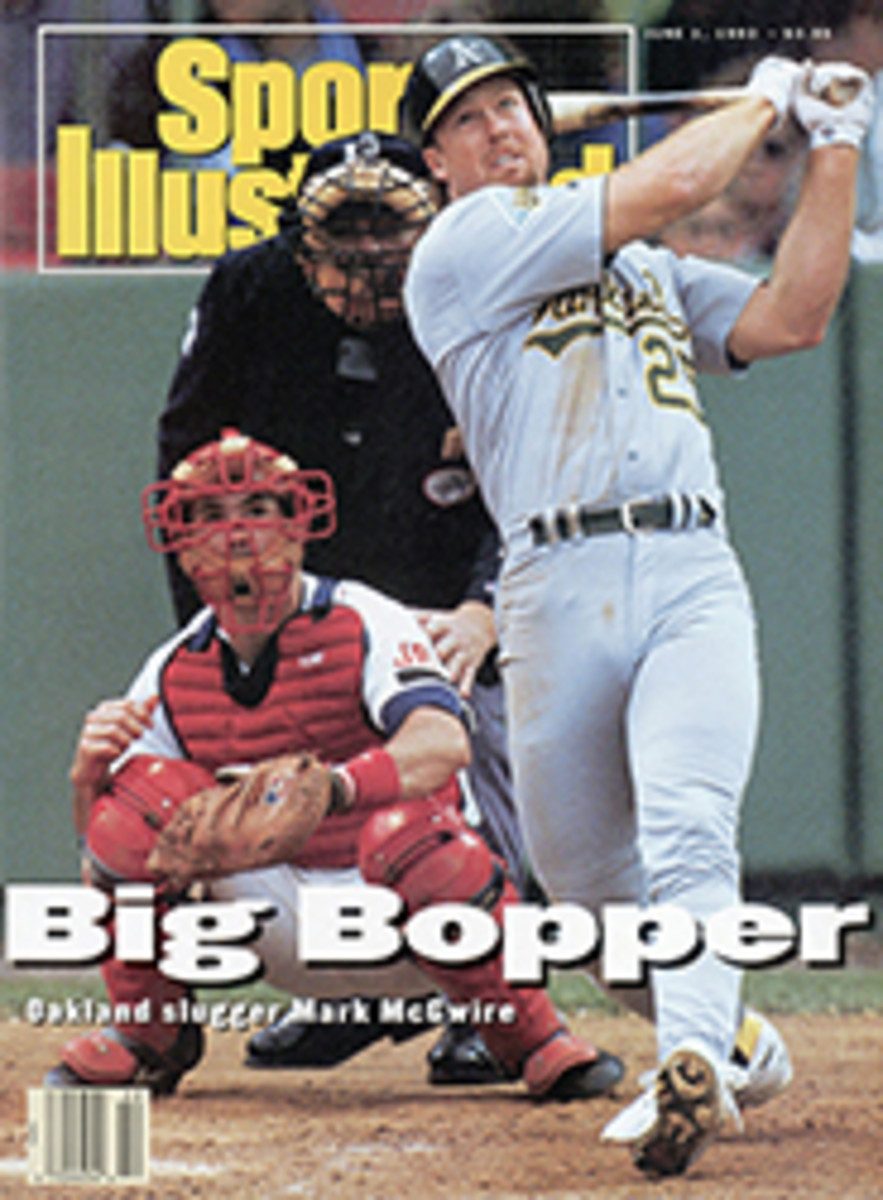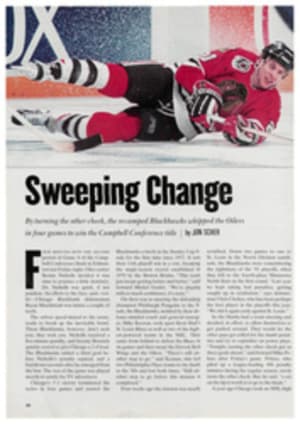
From Russia with Love
If the Soviet Union died not with a bang but a whimper, how do you explain where the pieces are falling? How does Vladimir Nazlymov, the coach of the world-champion Soviet saber team, wind up at an inner-city high school in Kansas City?
Answers have eluded the world fencing community since December, when it was announced that the two-time world saber champion and 1976 Olympic silver medalist had turned down offers from several national teams to take a job with the Kansas City, Mo., school district.
"My jaw dropped when I heard that," says Carla-Mae Richards, executive director of the United States Fencing Association (USFA), in Colorado Springs. "Especially since we wanted to hire him in conjunction with a club back east."
The Nazlymov hiring has created an equal stir in Kansas City, where taxpayers have questioned the need for a world-class fencing coach in a school district that, until last October, had no fencers. No wonder the 46-year-old Nazlymov was the center of attention in February, when 850 young competitors gathered in Kansas City for the 1992 Junior Olympic Fencing Championships and Youth Tournament.
In his blue windbreaker with the red letters CCCP on the back, the wiry coach left a wake of awed fencers and officials wherever he went. "He's an absolutely unique commodity, the best there is," said U.S. fencing official Russell Wilson. "We're unbelievably lucky to have him."
But why? The question dogs Nazlymov, who was, in Richards's words, "a man in demand" the moment the Soviet government sport committee broke up.
Speaking through an interpreter, Nazlymov gives answers that are partly personal and partly professional. He chose the U.S., he says, to be closer to his son, Vitali, who just completed his sophomore year at Penn State University, where he was the 1991 NCAA saber champion. Returning to the republic of his birth, Dagestan, was not really an option for Nazlymov; nor could he stay in Moscow to coach world saber champion Grigory Kirienko at a time when Russia needed food more than it needed fencers.
"If I were a farmer, I would have stayed to help out," Nazlymov says. "But I'm a physical trainer. That's all I do. And when you don't have anything to feed your kids...."
From the perspective of the international fencing community, Nazlymov had to be thinking with his heart instead of his head. U.S. fencing has produced few world-class fencers or international medal winners. Insiders blame a system dominated by two East Coast clubs—the New York Athletic Club and the New York Fencers Club—neither of which has an extensive Olympic development program for youngsters below high school age.
"The key problem in American fencing is poor basics," says Richards. "Our senior athletes work very hard, but it's difficult to correct poor technique once it's learned."
Nazlymov agrees. And that's why he didn't wait for the USFA to finish putting together a complicated package that would have made him coach of both the U.S. team and one of the New York clubs. "To change the national team would have been difficult," he says. "The two leading fencing clubs are operating a system that's more than 25 years old, and I would have had to break their style of thinking. I decided it would be better to start in a fresh place with small kids willing to learn."
That fresh place is Kansas City, where the once-neglected school system is under a 1986 federal court order to desegregate. The vehicles for desegregation are an ambitious magnet-school program and a $1.2 billion capital-improvements program designed to draw white students back from the suburbs. One of the magnet themes is the classical Greek ideal, based on the importance of a sound body and a sound mind.
The centerpiece of Kansas City's Greek school experiment is the new Central High School, a $32 million facility complete with classical statuary, a 42,000-square-foot field house and an eight-lane Olympic-sized pool. Billing itself as "the first American public high school for Olympic hopefuls," Central advertised last summer for a fencing coach and bagged 32-year-old Steve Butler, who had worked for nine years at St. Luke's Episcopal School in New York City, where he also ran an independent program that produced three national champions.
"My goal is to build such a successful program here that it will spill over to the whole country," Butler says. "We would like Kansas City to become the Moscow of the 21st century, in terms of fencing."
To prove there was substance to his strut, Butler went after Nazlymov. The two men had met at a USFA coaching clinic in Colorado Springs, and Butler says he was "absolutely flabbergasted" at the Russian's coaching methods. "But it's one thing to marvel at the brilliance and complexity of what he's teaching, and another to go back and change what you are doing. As a coach I knew I was just a vessel he could fill."
Nazlymov visited Kansas City last August and concluded that Central High School offered just what he was seeking—a committed disciple, community support and a pool of talented young athletes. Since December, Nazlymov, his wife, Natali, and their 18-year-old daughter, Elena, have lived in an apartment in suburban Lenexa, Kans. By the school year's end some 1,000 high school, middle school and elementary school students will have sampled the sport.
"He's a great salesman," says Butler. "Fencing looks sissy to some of these kids, so when we go into a classroom, we target the loudmouth who only wants to play basketball. He's the guy we want, and in 25 minutes we have him."
One of those reluctant fencers was 14-year-old Mark Miller, a member of Central's freshman basketball team. "I pictured Zorro," says Mark. "But I was willing to try it because it's an Olympic sport. Some of the guys think it's kind of wimpy. but it's a real mind game." Derrick Gines, a gangly sophomore long jumper who sports an earring, says, "I heard that he's the Michael Jordan of fencing, so, you know, I had to meet him."
So Nazlymov can dazzle American kids with his footwork. But can he hold them to the work ethic that had earned the Soviets four team world championships and three individual world titles since 1986, when he was named head coach of the national team?
"That's a concern," concedes Butler. "Our biggest problem isn't recruiting, it's retention. Instant gratification is the norm for these kids, and we have to get them to think long-term. I tell them that fencing is something that will get them into college, and that's why I'm selling it so hard."
It helps that Nazlymov is personable. Fencers run to him during workouts to check their pulses against his watch, and he flashes a ready smile at runners who pass his fencers on the indoor track.
Yet to be exploited is the fencing master's gift for advanced technique and analysis. "That's what really sets him apart," says Wilson, who officiated the saber finals at the 1988 Olympics. "He knows how to make fencers think and react on the strip. He teaches you how to think three steps ahead of an opponent."
Those insights will be tapped in August when Nazlymov and Butler, under the auspices of the International Fencing Academy of Kansas City, host an "international camp" for fencers and coaches. The two-week camp will feature Nazlymov's son, Vitali; Kirienko; former world saber champ Sergei Mindirgasov; and other former Soviet fencers who will arrive in Kansas City directly from the Olympics in Barcelona.
"To create a top-10 team in the world today, one person isn't enough." says Nazlymov. "Our goal in the U.S. is to create an infrastructure that will develop world-class athletes."
His timetable? Four to eight years—but only if America's fencing establishment responds. He and Butler are heartened by the USFA's growing commitment to youth fencing and by the news that inner-city programs have started up in Pittsburgh, Cleveland and New York City. On the other hand, neither man dismisses the difficulty of building a strong national team in a country with little awareness of the sport and only 50 or so serious high school fencing programs around the country.
"One would think that a country that thrives on difficulty would thrive on fencing," Nazlymov says, "but the last three years I've been here, I haven't seen any movement in American fencing. We all know that when Americans want results, they can get them—not just in sports, but overall. That's why the United States is such a great nation."
For now Nazlymov seems content to work in comparative obscurity. But if Kansas City—a barbecue and jazz town—becomes famous for fencers, the man from Dagestan will be responsible.
"We've had other coaches come from Europe and do some good for a few fencers." says Butler. "But there's never been a concerted effort made to change the whole system. When they die, they leave a rusted foil on the wall."
He smiles. "It's clear that Vladimir is determined to change the system."
PHOTO
DANNY TURNER
Nazlymov gives some pointers to a Central High student.
PHOTO
DANNY TURNER
Vitali won the 1991 individual NCAA saber title when he was a Penn State freshman.

